
The Incredible Safari Animals of Africa & Where To See Them
By Caitlin Spouge
Last updated: 29th December 2023
A continent brimming with awe-inspiring landscapes, there’s no better place than Sub-saharan Africa, particularly Southern and East Africa, to see your favourite safari animals roaming around. As soon as you arrive for your adventure, you'll be counting down the minutes before you hop in a game drive vehicle for unmatched viewing opportunities - no need for binoculars!
Here are the top African animals to see on your safaris and where best to spot your favourites. We’ll start with the epic Big 5, which are lions, leopards, elephants, rhinoceros and buffalo. Game hunters named the Big 5 to rank the most challenging to hunt. Now, the Big 5 list has been adopted to rank the top animals to spot on your trip.
Safaris will offer plenty of opportunities to see safari animals beyond the famous Big 5 as well, so keep reading for the full list.
Lions

The king of the jungle! It’s impossible not to fall in love with Africa’s most iconic and revered creature. As highly sociable animals, they are the only cats to live in groups, residing in prides of up to 40 lions with an important social structure. It’s the lionesses' job to hunt and nurture the young, whilst the male lions protect the territory. You can easily spot the difference between the two, as only the male lions have manes.
Apex predators are those at the top of the food chain which, of course, lions are! This means their diet consists of the other largest animals on the landscapes, including antelope, buffalo, zebra, giraffe and rhino.
Lions spend the majority of their day resting in the shade and conserving their energy. Your best chance of spotting lions is in the morning and the evening as this is when they are on the hunt.
From an estimated 200,000 lions in the wild a century ago, the current numbers are around 20,000 due to habitat loss and poaching. This decline has led to their classification as “Vulnerable” on the International Union for Conservation of Nature (IUCN) Red List.
Best places to see lions:
South Africa - Kruger National Park (Visit on our Sunsets & Safaris trip)
Tanzania - Serengeti National Park and Ngorongoro Crater
Zambia - South Luangwa Nation Park
Kenya - Maasai Mara National Park
African Leopard
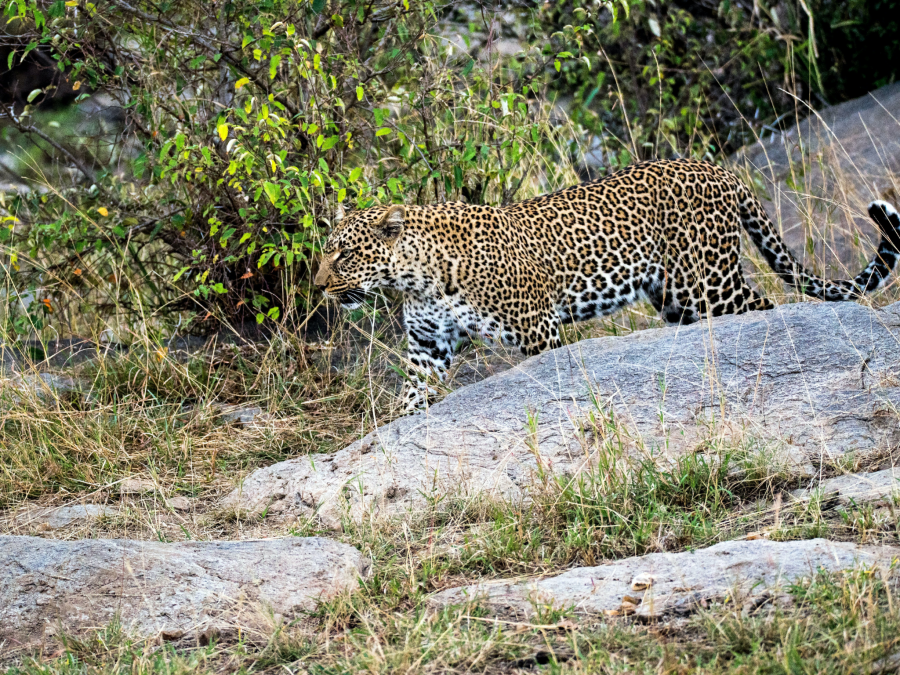
Less sociable than their lion cousins and masters in camouflage, leopards are pretty tough to spot out of the Big 5. A top tip is to look up in the trees on your safaris. They are most likely lazing in the trees during the day as they are nocturnal. Then, in the evening, it is time for them to head out hunting on their own. You will rarely see two leopards together, with the exception of a mother with young cubs (which would be a special treat as they are especially cute safari animals!).
Whilst beautiful and elegant, leopards are evidence that looks can be deceiving as they are exceptionally skilled hunters who can take down prey much larger than themselves. Their varied diet consists of anything as small as a rodent, to anything as big as antelope, gazelle and buffalo.
African leopards are listed as “Vulnerable” on the IUCN Red List due to trophy hunting and habitat loss.
Best places to see leopards:
Kenya - Maasai Mara National Park (Visit on our Kenya Safari Adventure trip)
Botswana - Okavango Delta
Tanzania - Serengeti National Park and Ngorongoro Crater
Zambia - South Luangwa National Park
African Elephant
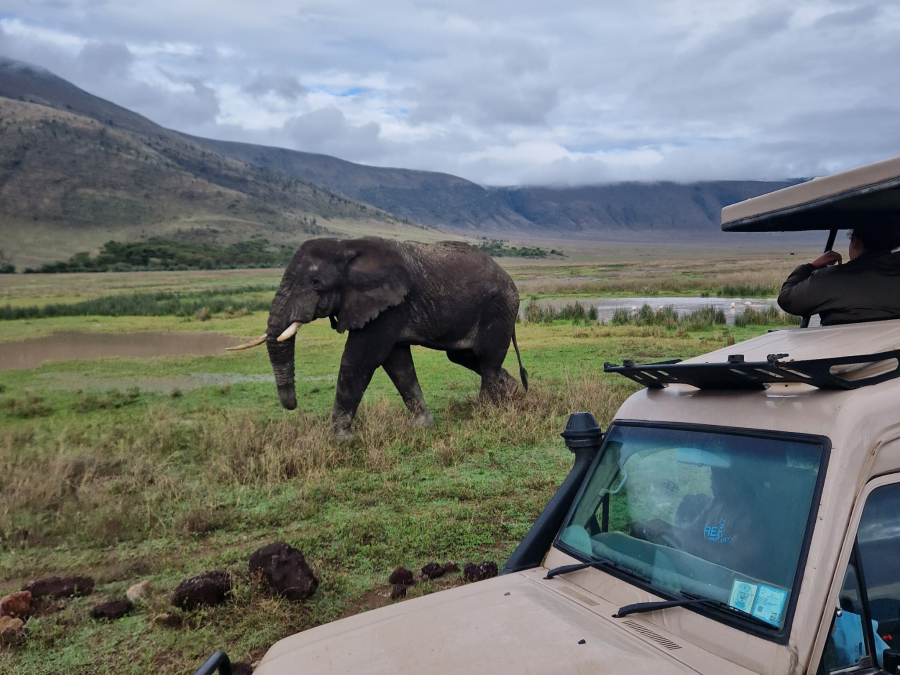
Recognisable by their huge ears, you won’t miss these giant safari animals as the African bush elephant is the largest land mammal in the world! Prepare to have your breath taken away as these enchanting creatures peacefully roam past your safari jeep or wander through your campsite. If you are travelling West Africa, you are more likely to meet forest elephants, a type of African elephant that is smaller and hairier.
African elephants are a favourite among safari go-ers and you’ll likely see herds everywhere you go. However, numbers are declining due to poaching for ivory and habitat loss. It is currently estimated that there are around 415,000-450,000. Their conservation status is classified as “Vulnerable” on the IUCN Red List. Conservationists are focusing on preserving their habitats and securing safe corridors for their migration.
Best places to see elephants:
South Africa - Addo Elephant Park (Visit on our Garden Route Road Trip)
Namibia - Etosha National Park
Tanzania - Serengeti National Park
Botswana - Chobe National Park
Rhinoceros
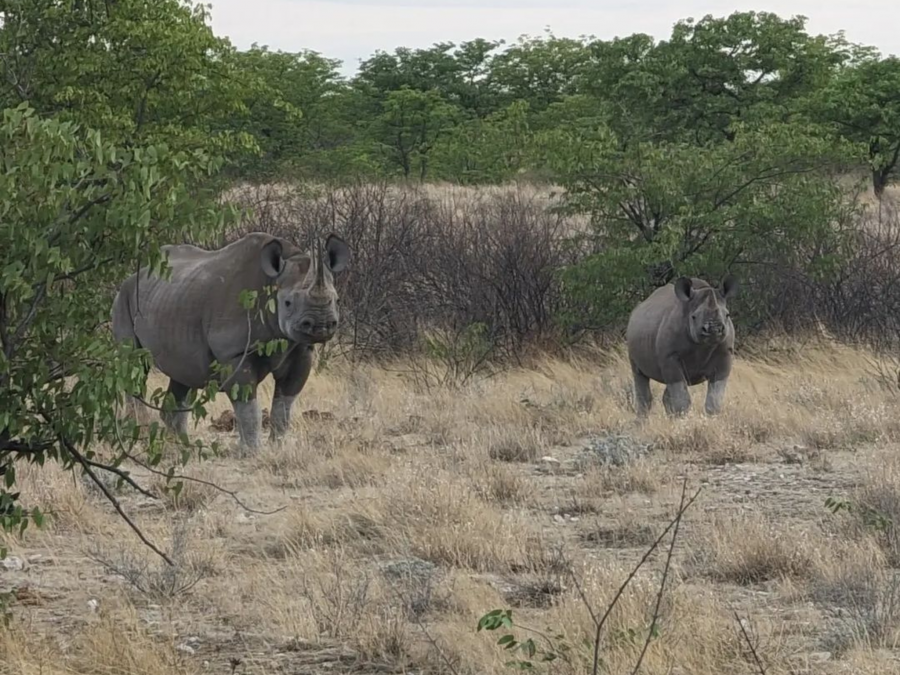
The great horned animals of Africa! The rhinoceros is the second largest land mammal and is famous for its ‘nose horn’ - which is actually where the name rhinoceros comes from in Latin. Conservation efforts are incredibly important for rhinos as they are currently on the brink of extinction, particularly black rhinos. You are more likely to spot a white rhino, whose numbers are slowly increasing thanks to conservationists and rhino sanctuaries. White rhinos are larger and found in the savannah, whereas black rhinos prefer to browse in woodlands.
With few natural enemies in the wild, without human intervention, a rhino can live up to 50 years old. Meeting a rhino in the wild is an amazingly memorable, yet rare, experience. You are most likely to see rhinoceros at a game reserve or rhino sanctuary.
Best places to see rhinoceros:
South Africa - Kruger National Park (Home to 90% of all white rhinos. Visit on our Sunsets & Safaris trip)
Namibia - Etosha National Park
Kenya - Ol Pejeta Conservancy
Tanzania - Ngorongoro Crater
Cape Buffalo
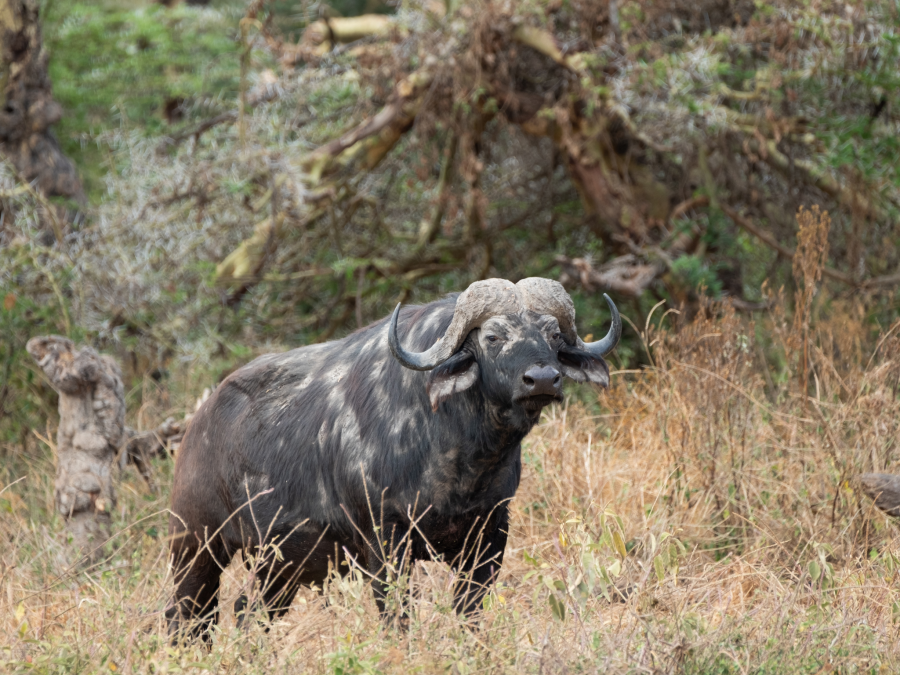
If a cape buffalo is not currently on your wildlife spotting list, they should be as they are very impressive due to their huge size and distinctive horns. They can run at 35mph and have a dangerous temper, with few predators and a habit of charging at anything in their way. You may also hear a cape buffalo referred to as an “African buffalo”.
Cape buffalos will usually be seen roaming in huge herds, which is when they are most safe to be around as they are much more calm than when roaming solo. You will see them grazing on various grasses and vegetation as they are herbivores.
Cape buffalos are classified as “Least Concern” on the IUCN Red List. This is a testament to their resilience in the wild.
Best places to see a cape buffalo:
Kenya - Amboseli National Park (Visit on our Kenya Safari Adventure trip)
Botswana - Chobe National Park
Namibia - Etosha National Park
South Africa - Kruger National Park
Tanzania - Serengeti National Park and Ngorongoro Crater
Zambia - South Lungwa National Park
Hyena
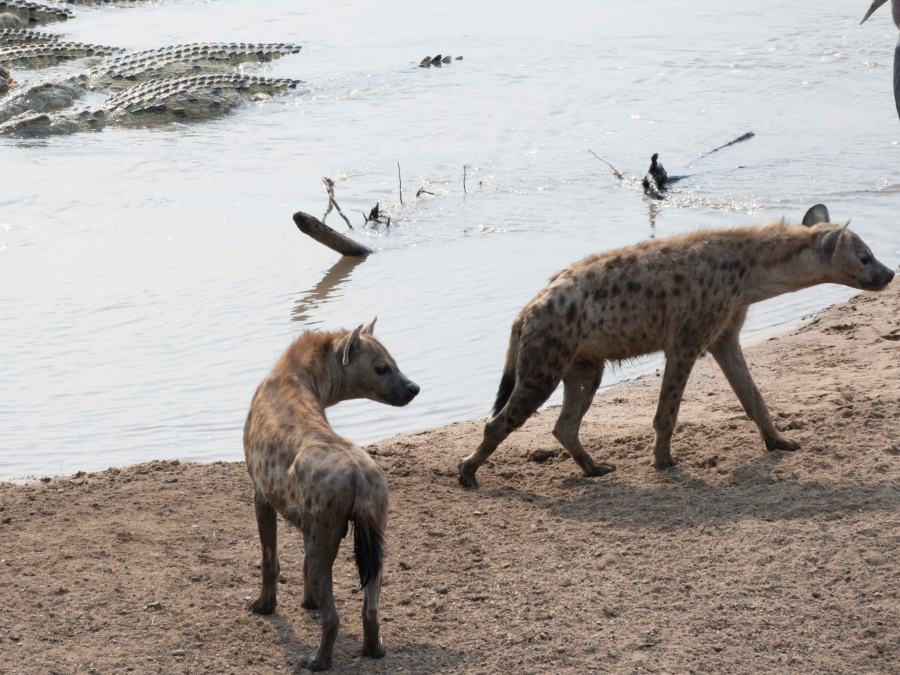
There are so many amazing safari animals to add to your list that aren't one of the Big 5. Hyenas are listed as one of the “Ugly 5” (joining marabou stork, vulture, warthog, and wildebeest). They are amazingly intelligent and have a very adaptable diet. They hunt for prey in great packs and also scavenge off other animals' kills.
Safari enthusiasts believe hyenas are underrated on the “must-see” list and we can’t help but agree, simply because the chances of seeing them are so high! They can be found in just about any landscape and it’s not uncommon to be awoken in our campsite to a hyena’s famous “laugh”.
Hyenas are classified as “Least Concern” on the IUCN Red List.
Best places to see hyenas:
Kenya - Maasai Mara National Park (Visit on our Kenya Safari Adventure trip)
Botswana - Okavango Delta and Chobe National Park
Kenya - Maasai Mara National Park
Tanzania - Serengeti National Park and Ngorongoro Crater
Wildebeest

Along with Hyenas, wildebeest also belongs to the “Ugly 5”. Despite this, they attract many travellers to Southeastern Africa to witness the world-renowned wildebeest migration, one of the “Seven Wonders of the Natural World”. Throughout the year, over 1.5 million wildebeest migrate in a constant loop from Kenya to Tanzania, following the rain and searching for greenery.
In January and February, it is the wildebeest birthing season, so this is when you will find wildebeest moving from Serengeti National Park to Ngorongoro Conservation Area, joined by their adorable calves. Over 8,000 new calves are born during this time every day. The wildebeest migration is not without risk to the wildlife, and vulnerable young during this season means a great number of big cats are on the hunt.
After passing through Ngorongoro, the wildebeest can be spotted passing through central Serengeti around April. During mating season in May, you can watch the males going head-to-head.
The Mara River crossings in north Serengeti in June and July are considered some of the most thrilling wildlife viewing events in the world as the wildebeest must avoid the resident crocodiles.
You will spot the herds in the Maasai Mara in August before they move back down from Kenya into eastern Serengeti in November.
Best places to see wildebeest:
Kenya - Maasai Mara National Park (Visit on our Kenya Safari Adventure trip)
Tanzania - Serengeti National Park and Ngorongoro Crater
Zambia - South Luangwa National Park
Namibia - Etosha National Park
Botswana - Chobe National Park
Zebra
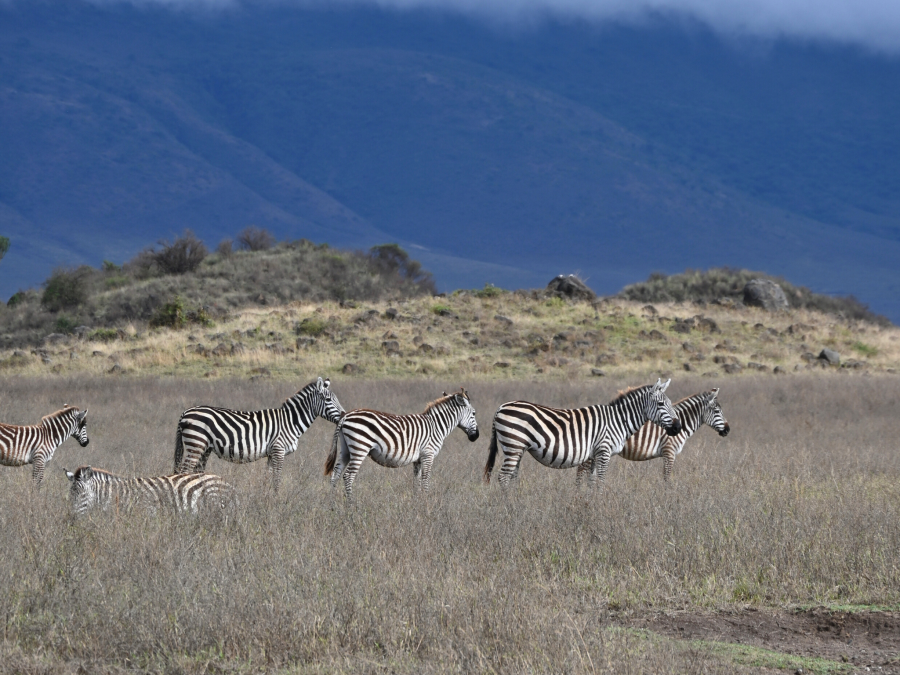
Photographers dream about the day they get to picture a wild zebra, they are simply so photogenic it’s unbelievable. Did you know that every single zebra’s stripes are unique? They’re a wildlife wonder to behold!
The plains zebra is the most common you will see on your safari, with approximately 750,000 roaming around. The Grevy’s zebra is classified as “Endangered” on the IUCN Red List, with approximately only 1,500.
Best places to see Zebra:
Botswana - Chobe National Park (Visit on our Sunsets & Safaris trip)
Kenya - Maasai Mara National Park
Tanzania - Serengeti National Park and Ngorongoro Crater
Namibia - Etosha National Park
Zambia - South Luangwa National Park
Hippopotamus
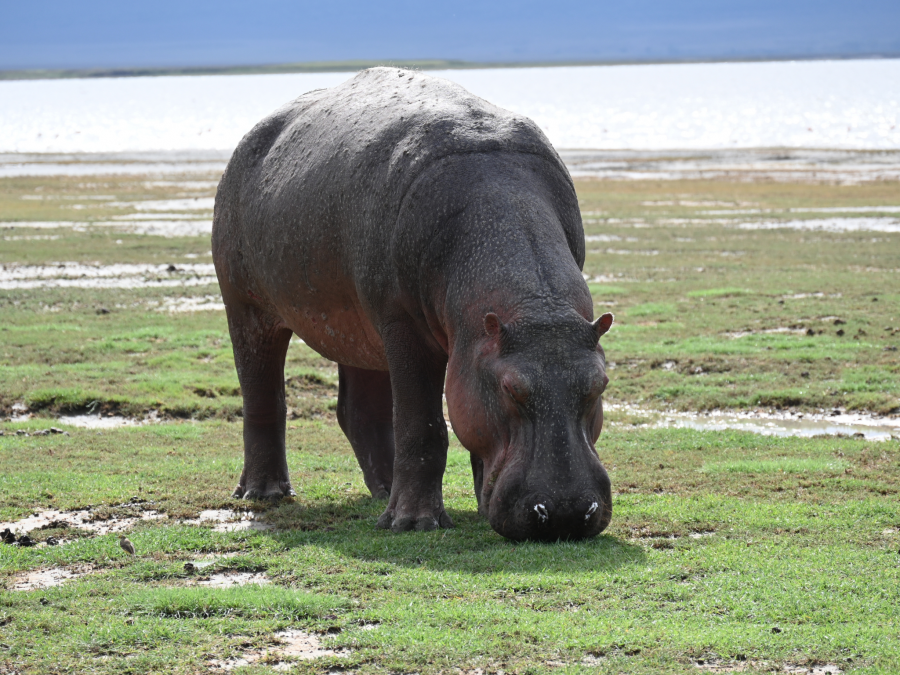
Hippos may look adorable, yet they are ranked among the most dangerous animals in Africa. You will most likely see hippos in or around the water as they are semi-aquatic. However, they actually can’t swim. Hippos run along the bank of the water and can reach speeds of around 30mph.
If you are staying at a campsite near a lake, you may wake up to a hippo grazing next to your tent!
Best places to see hippos:
South Africa - Kruger National Park (Visit on our Sunsets & Safaris trip)
Botswana - Okavango Delta
Kenya - Maasai Mara National Park
Giraffe

Found primarily in the savannah, grasslands and open woodlands, giraffes are captivating to spot. Alike zebra, their iconic spots are unique to each individual. As herbivores, giraffe’s diet mainly consists of leaves from the tallest trees.
It is estimated that there are fewer than 100,000 remaining in the wild loss and as a result, they are listed as “Vulnerable” on the UCN Red List.
Best places to see giraffes:
South Africa - Kruger National Park (Visit on our Sunsets & Safaris trip)
Tanzania - Serengeti National Park
Kenya - Maasai Mara National Reserve
Mountain Gorilla

If you adventure to Uganda or Rwanda, you may get the opportunity to spot rare mountain gorillas in the jungle. Spotting families of this endangered species (with an estimated population of around 1,000 individuals in the wild) is a once-in-a-lifetime experience. You can get surprisingly close on jungle treks and guided trips are monitored to ensure the preservation of the families. Tourism plays an important role in funding conservation efforts and raising awareness.
Their diet primarily consists of plants, including leaves and fruits, with the occasional insect as a snack.
Best places to see mountain gorillas:
Uganda - Bwindi Inpenetrable Forest
Rwanda - Volcanoes National Park
If you love wildlife, safaris in Southeastern Africa will be everything you are dreaming about and more. You can get up close to the natural world and discover how the intricate ecosystems work together. Visiting game reserves in Africa is also a great opportunity to witness important conservation work and meet inspiring rangers. To see all of Real Travelling’s trips to Africa, click here.


